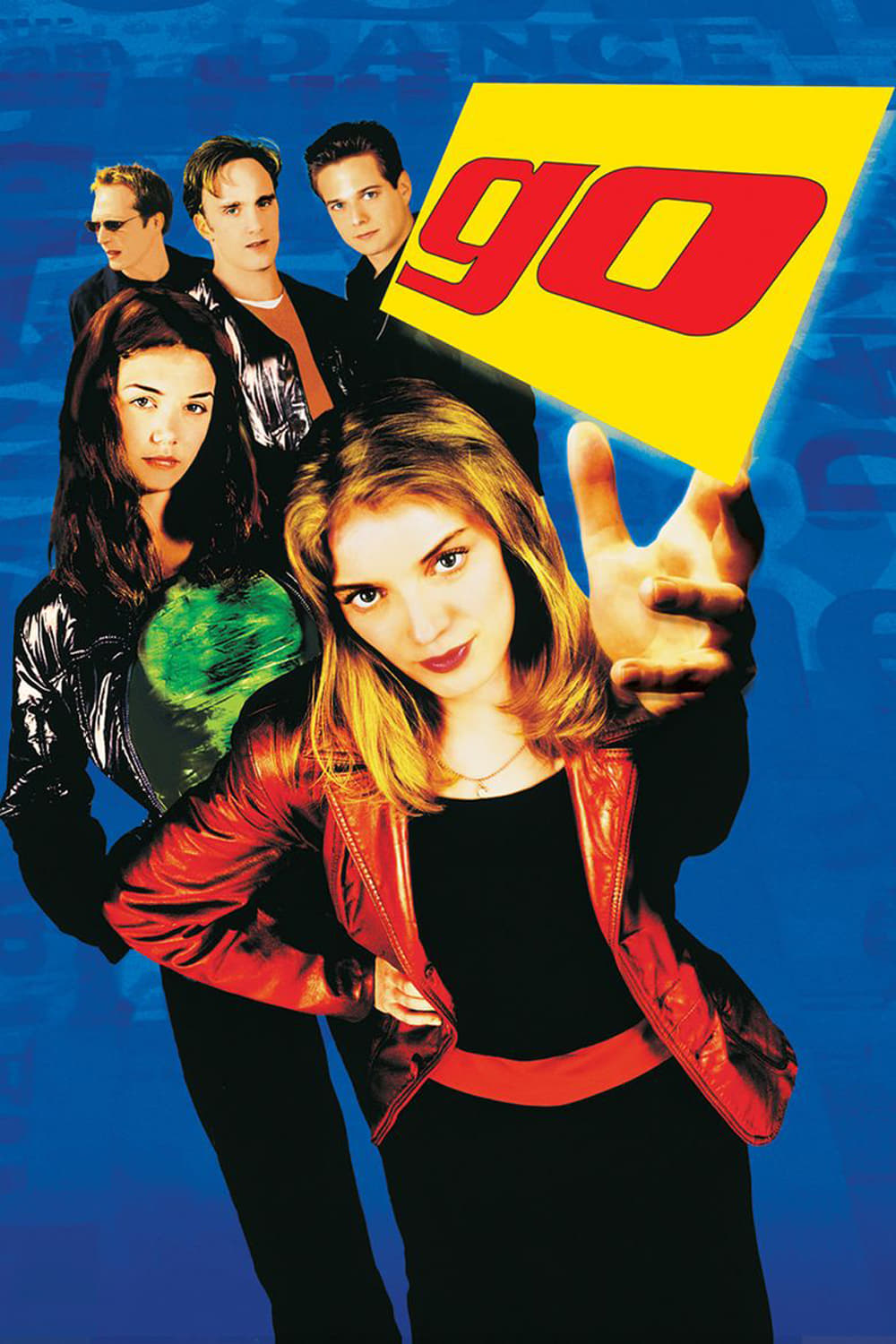
Grocery store clerk Simon occasionally sells drugs from his cash register at work, so when soap opera actors Adam and Zack come looking for Ecstasy on a quiet Christmas Eve, they are surprised to find Ronna covering his shift. Desperate for money, Ronna decides to become an impromptu drug dealer, unaware that Adam and Zack are secretly working for obsessed narcotics officer Burke.
13 May Go (1999)
Unbearable Lightness of Going
Critics and commentors have beaten to death the Pulp Fiction’ comparisons. Yes, this has parallel stories, time folding (but not the time shuffling of Pulp’), black and white shuffling, guns drugs and ironic violence, diner scenes and a hip perspective. But to me that is less central than the relationship of the shape to the style.
Tarantino’s method is from comic books, his manipulation of the narrative deliberately has nothing at all to with the narrative itself. That’s the point, that emptiness. ‘Go’ is the opposite. It takes much of the same stylistic manipulation of narrative and turns it all to the service of the movie: the film capriciously meanders like the small lives of these kids. Now, that’s not a very heavy notion to settle on, but it is cinematically profound in linking the point of the movie to the unrolling of the images.
In other words, if you love the visual grammar of film, you’ll love this. If instead you prefer using the art of filmmaking to display the emptiness of film, you’ll like ‘Pulp’. They are as different as can be. ‘Go’ follows the tradition of Hitchcock and Welles where the ‘story’ is centred in the images. ‘Pulp’ follows a wholly contradictory world defined by the ‘new wave’ where every image is ironic and deliberately doesn’t rest in the story but runs contrary to it.
At some point, every serious film viewer will confront this choice. It is a matter of whether you will let yourself go with the flow or always maintain a smug distance.
The writer understands this, and makes it explicit with story C which features two actors. They are enlisted in an enterprise of moviedom’ in real life where they are wired for sound and videoed. More, their master engages them in forced commerce. This is mirrored in story B with the lap dance show’ and more faintly in A with the selling in the store and the rave. All these kids are engaged in indentured but shameless sales of the movie to us.
I have a very short list of actors who are worth watching regardless of the context. Cate Blanchett, Kate Winslet, and Julianne Moore are the actresses I follow because of their ability to present more than one personae at a time. Sarah Polley is close to being on that list, but not for the same reason. She — or her advisors — has made some very intelligent choices, placing her in central roles in some very alternative projects. These are films that require — even in the watching — a deliberate shift in thinking about what film is. In each, she has appeared with radically different acting styles, always entirely apt. It shows that she understands what these rather subversive projects are all about. Privately, her politics seems amazingly unsophisticated, but her deliberate plasticity on screen shows a remarkable ability.
Posted in 2002
Ted’s Evaluation — 3 of 3: Worth watching.


No Comments